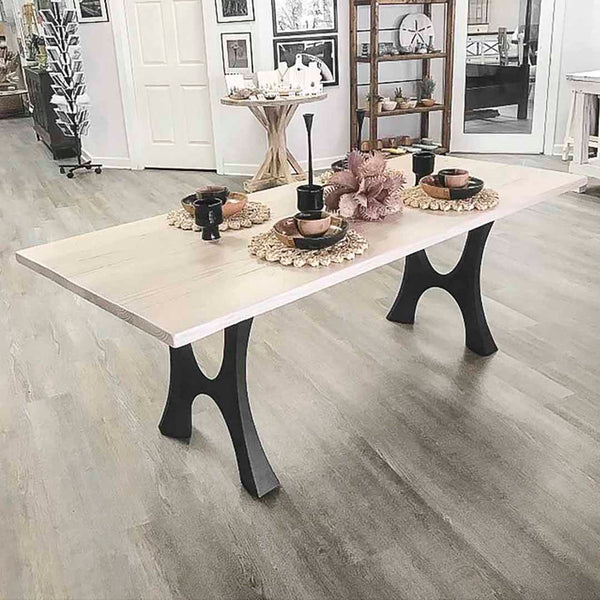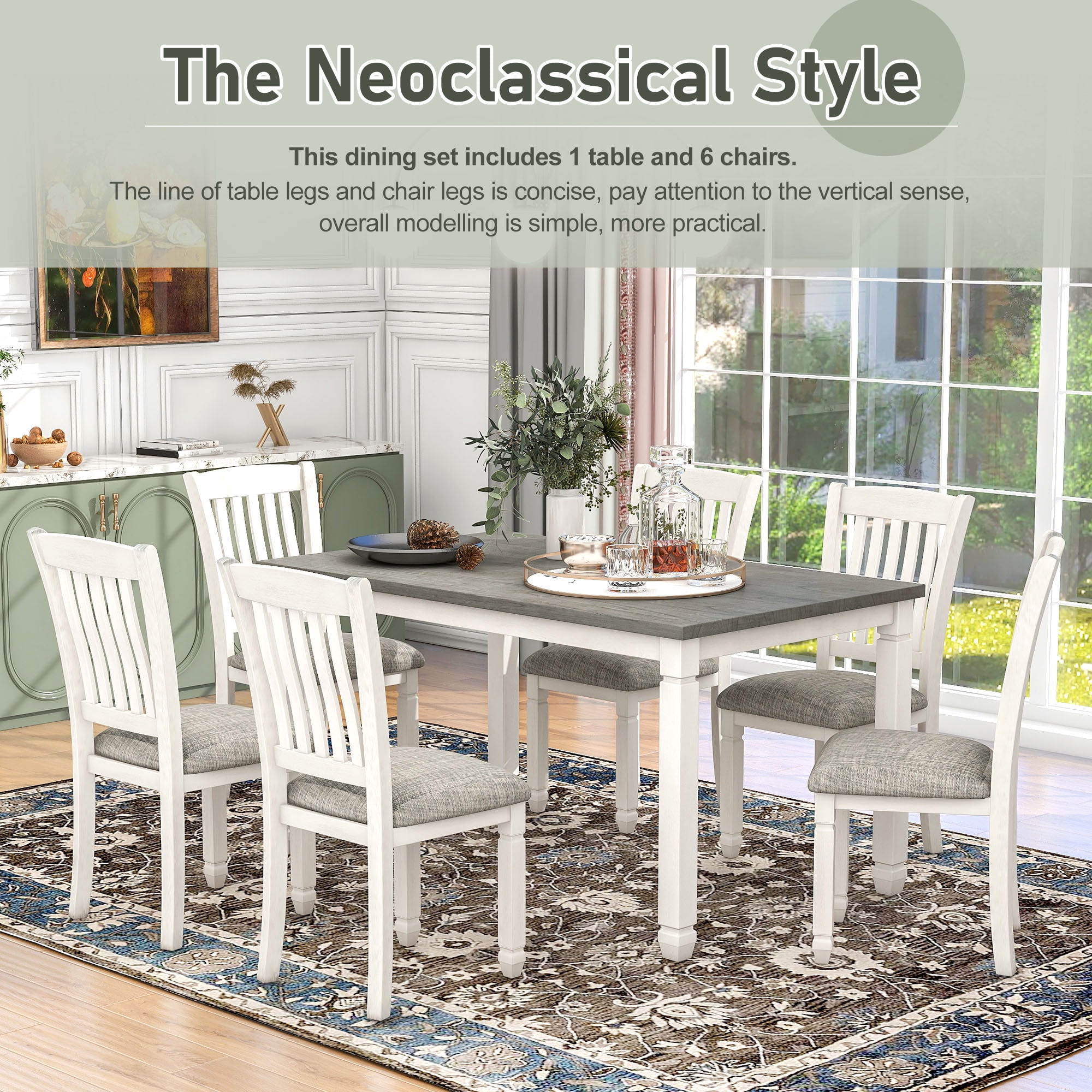From Typical to Modern: Discover the Perfect Eating Space Table Legs for Your Style
The selection of dining-room table legs plays a pivotal role in specifying the overall personality of your space, connecting the space between traditional workmanship and modern-day aesthetics. While timeless styles such as cabriole and transformed legs evoke a feeling of ageless class, contemporary designs like barrette and geometric options present a possibility for striking visual passion. Assessing the best balance between these styles calls for a nuanced understanding of your existing decor and individual taste. As you consider these aspects, the question remains: how can you flawlessly integrate these varied leg designs to produce a harmonious dining experience?
Recognizing Table Leg Styles
The selection of dining room table leg styles can significantly influence both the aesthetics and functionality of the space. Each leg design adds distinct visual elements and useful features, accommodating varied design choices and use needs. Recognizing these designs is vital for picking the ideal eating table that lines up with your general indoor layout vision.
For circumstances, tapered legs provide a tidy, timeless appearance that can improve a room's elegance, while stand bases give security and take full advantage of legroom, making them suitable for smaller rooms. Hairpin legs, a characteristic of mid-century contemporary design, present a commercial flair, permitting an airy, open feeling. Trestle legs stimulate rustic beauty, providing durable support and a feeling of timelessness.
Wood legs can bring heat and texture, whereas metal options frequently convey a smooth, contemporary ambiance. Eventually, recognizing table leg styles is important for creating a natural dining area that mirrors personal style while ensuring functionality and comfort.
Conventional Table Leg Options
When selecting eating space table legs, typical choices usually symbolize classic beauty and craftsmanship. These styles mirror a rich heritage and a commitment to top quality, making them ideal for those that value timeless looks.
Among one of the most famous conventional leg styles is the cabriole leg, identified by its stylish bent form. This layout frequently features ornamental makings and is most commonly found in Queen Anne and Chippendale furniture. One more prominent choice is the turned leg, which flaunts a series of smooth, rounded forms that give a traditional appearance while preserving security.
Moreover, the straight leg, while easy, uses a basic and strong structure that can blend effortlessly with a selection of tabletop styles. For those attracted to ornate detailing, claw-and-ball feet legs evoke a feeling of grandeur and can offer as a sensational prime focus in any type of eating room.
Last but not least, stand bases, although not strictly legs, provide an alternate traditional alternative that enables adequate legroom and can be perfectly sculpted. Each of these conventional leg designs adds to the general ambiance of a dining-room, weding feature with aesthetic allure.

Modern Table Leg Styles
Modern table leg designs supply a varied variety of designs that highlight innovative products and tidy lines. These styles frequently focus on performance while working as striking centerpieces within read this article a dining area. Minimalist appearances are common, with legs crafted from products such as steel, glass, and crafted timber, which contribute to a ventilated and contemporary feel.
One prominent design is the hairpin leg, identified by its slender, tapered structure that offers security without overwhelming the tabletop (dining room table legs). This design is frequently discovered in mid-century modern-day furniture and can easily enhance various eating table forms. Another trend is using geometric forms, where legs might tackle unbalanced or angular kinds, adding visual rate of interest and a touch of artistry

Mixing Designs for Distinct Spaces
Frequently, home owners seek to develop distinct eating spaces that reflect their personal design by mixing numerous design components. This approach permits the unification of varied aesthetic appeals, causing an unified yet distinctive atmosphere. Pairing a rustic wood table with sleek, modern steel legs can create a captivating contrast that boosts the room's general appeal.
Furthermore, incorporating vintage table legs with contemporary table tops can stimulate a sense of history while preserving a modern sensibility. Such mixes not just display specific preference but additionally encourage creativity, enabling home owners to curate an area that feels both personal and inviting.
Color plays an important function in this blending process; choosing table legs that enhance or contrast with the existing color pattern can enhance visual rate of interest. Whitewashed legs can soften the daring of a dark table surface area, creating a well balanced aesthetic.
Tips for Choosing the Right Legs
Selecting the right table legs is crucial for accomplishing both functionality and visual allure in your eating area. Begin by taking into consideration the overall design of your space. Typical settings take advantage of legs that include complex see this makings or turned designs, while contemporary spaces might require sleek, minimal styles.
Next, evaluate the elevation and stability of the legs. dining room table legs. Standard eating tables vary between 28 to 30 inches in elevation, so make certain the legs complement this dimension for convenience. In addition, durable products, such as wood or check out here metal, can improve security and long life
Evaluate the leg shape also-- options consist of directly, tapered, or stand layouts. Straight legs offer a traditional look, while conical legs can add a touch of beauty. Pedestal bases supply ample legroom and are optimal for smaller sized areas.
Conclusion
In summary, picking the excellent eating area table legs requires mindful factor to consider of both conventional and modern styles. By balancing leg design, elevation, and material with the general decoration, a natural and inviting environment can be accomplished.
The variety of dining room table leg styles can considerably affect both the visual appeals and performance of the area. Ultimately, understanding table leg designs is vital for creating a cohesive eating area that shows personal design while ensuring practicality and convenience.One of the most famous traditional leg styles is the cabriole leg, defined by its elegant bent shape. Straight legs use a timeless look, while tapered legs can add a touch of style.In summary, picking the optimal dining space table legs calls for cautious factor to consider of both modern-day and traditional designs.